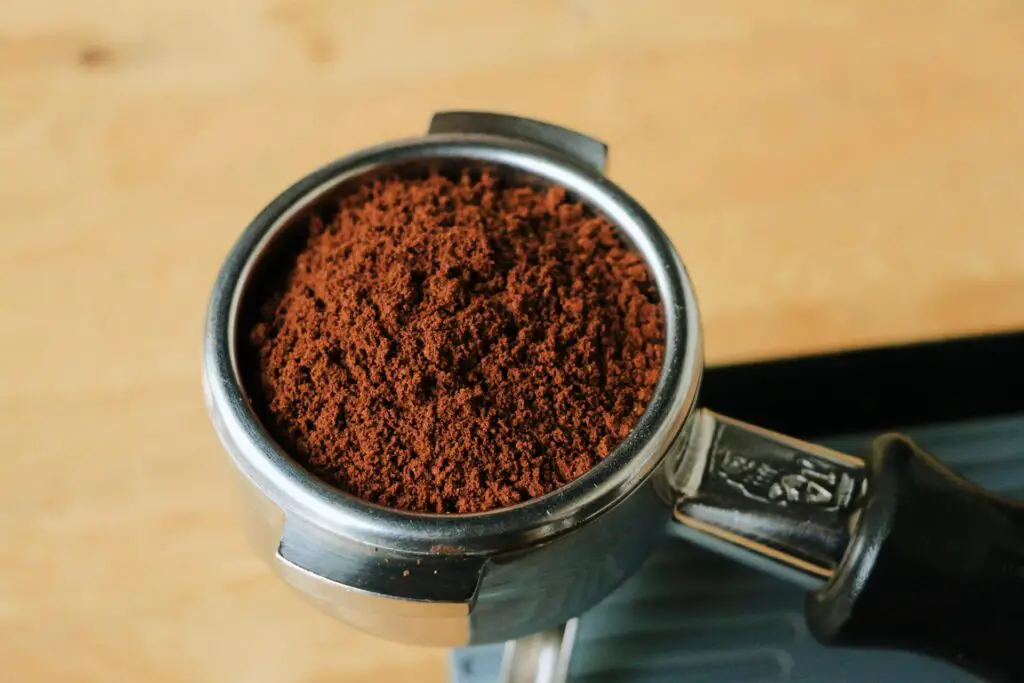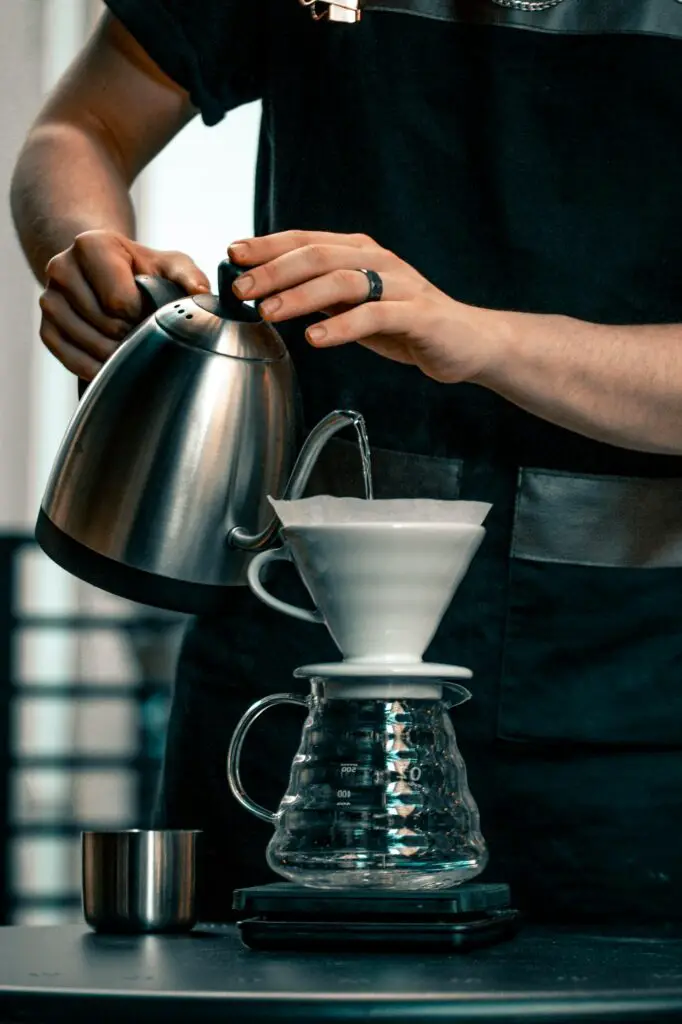Swedish egg coffee is a unique and delicious way to enjoy your morning brew.
This method, originating in Sweden, has been a beloved tradition among Scandinavian-Americans in the Midwest.
Often referred to as “church basement coffee,” it gained popularity in Lutheran church gatherings.
Adding an egg to the coffee grounds might sound strange, but it creates a smooth, clear, and non-bitter cup of coffee.
Let’s look at this fascinating coffee-making technique and learn how to make your own authentic Swedish egg coffee.

What is Swedish Egg Coffee?
Swedish egg coffee is a traditional coffee brewing method that stands out for its unique preparation and exceptional taste.
It involves adding a raw egg directly to the coffee grounds before brewing.
This technique, though unusual, has a significant impact on the final brew.
The egg helps to clarify the coffee, resulting in a smooth, clear, and non-bitter cup.
The egg white removes impurities and bitterness from the coffee, while the eggshell, if included, helps reduce the acidity.
This process leaves you with a light, clean-tasting coffee that is both rich and creamy.
Swedish egg coffee is known for its smooth texture and the absence of the harsh, bitter notes often found in regular coffee.
This distinctive brewing method creates a coffee experience that is both mellow and flavorful, making it a beloved choice for those who enjoy a refined cup of coffee.
Benefits of Adding Egg to Coffee

Adding an egg to coffee is more than just a quirky tradition; it brings several benefits that enhance the overall coffee experience.
Clarifies the Coffee
When you add an egg to the coffee grounds, it helps to clarify the brew.
The proteins in the egg bind with the coffee grounds, which makes them clump together and float to the top.
This process makes it easier to separate the grounds from the liquid, resulting in a smooth and clear coffee.
Removes Bitterness and Reduces Acidity
The egg white in particular plays a crucial role in improving the taste of the coffee.
It removes impurities and reduces bitterness, making the coffee less harsh on the palate.
Additionally, if the eggshell is included, it helps to neutralize the acidity in the coffee due to the calcium carbonate present in the shell.
Enhances the Caffeine Content
One of the lesser-known benefits of adding an egg to coffee is that it can enhance the caffeine content.
The egg’s properties help to extract more caffeine from the coffee grounds during brewing, giving you a more robust and invigorating cup of coffee.
Produces a Rich, Creamy Texture
The addition of an egg gives the coffee a rich and creamy texture.
The fats and proteins in the egg contribute to a velvety mouthfeel, making each sip smooth and luxurious.
This creamy texture enhances the overall drinking experience, making Swedish egg coffee a delightful treat.
Ingredients and Equipment

To make authentic Swedish egg coffee, you will need a few specific ingredients and tools.
Here’s what you’ll need:
Ingredients
- 5 tablespoons of ground coffee: Use your preferred coffee blend, but a medium to coarse grind works best.
- 1 whole egg: You can use it with or without the shell, depending on your preference. The shell helps to reduce acidity.
- 4 cups of water: This is for brewing the coffee.
- 1 cup of cold water: Used at the end to help settle the grounds.
- Optional: Sugar, milk, or spices like cinnamon or cardamom to enhance the flavor.
Required Equipment
- Saucepan or enamel coffee pot: This is essential for boiling the coffee mixture. An enamel pot is traditional, but any saucepan will do.
- Fine mesh strainer or French press: Used to strain the coffee grounds out of the final brew, ensuring a smooth cup.
Step-by-Step Recipe Instructions

Step 1: Preparation
Start by gathering all your ingredients.
This includes 5 tablespoons of ground coffee, 1 whole egg (with or without the shell), 4 cups of water, and 1 cup of cold water.
Optional ingredients like sugar, milk, or spices such as cinnamon or cardamom can also be prepared if desired.
Crack the egg into a bowl and mix it thoroughly with the coffee grounds.
The mixture should be well-blended to ensure the egg coats the coffee grounds effectively.
Step 2: Boiling the Water
Next, bring 4 cups of water to a rapid boil in a saucepan or an enamel coffee pot.
The boiling water is essential for extracting the coffee and ensuring the egg mixture cooks properly, eliminating any potential bacteria.
Step 3: Combining Mixture
Once the water reaches a rapid boil, carefully add the egg and coffee mixture to the saucepan.
Stir gently to combine.
Reduce the heat and allow the mixture to simmer for 3-4 minutes.
This simmering process helps to cook the egg, which binds with the coffee grounds and removes bitterness.
Step 4: Settling the Grounds
After simmering, remove the saucepan from heat.
Add 1 cup of cold water to the mixture.
The cold water helps the coffee grounds to settle at the bottom of the pot.
Let the coffee sit for about 10 minutes.
This resting period allows the grounds to settle completely, making it easier to strain the coffee later.
Step 5: Straining and Serving
Finally, pour the coffee through a fine mesh strainer or a French press to separate the liquid from the coffee grounds.
Serve the strained coffee immediately.
You can add milk, sugar, or spices like cinnamon or cardamom to taste.
Enjoy the smooth, clear, and non-bitter Swedish egg coffee that you’ve made!
Tips for Making Perfect Swedish Egg Coffee

Ensure the Water is Boiling Before Adding the Egg-Coffee Mixture
One crucial step in making perfect Swedish egg coffee is to make sure the water is boiling before you add the egg and coffee mixture.
Boiling water helps to ensure that the coffee grounds are properly extracted and that the egg is cooked thoroughly.
This not only improves the flavor of the coffee but also ensures that any potential bacteria in the egg are eliminated.
Make sure the water reaches a full, rolling boil before you proceed to the next step.
Simmer Instead of Boiling to Avoid Over-Extraction
After adding the egg-coffee mixture to the boiling water, it’s important to reduce the heat and let it simmer rather than continue boiling.
Simmering allows the coffee to extract slowly and evenly, preventing over-extraction, which can lead to a bitter taste.
Keep an eye on the pot to ensure it maintains a gentle simmer for the recommended 3-4 minutes.
This gentle cooking process helps to bind the egg to the coffee grounds, removing impurities and bitterness.
Use Fresh, Pasteurized Eggs to Reduce Food Safety Risks
Using fresh, pasteurized eggs is another key tip for making Swedish egg coffee.
Pasteurized eggs have been heat-treated to kill any harmful bacteria without cooking the egg itself, making them safer to use in recipes that involve minimal cooking.
Fresh eggs ensure the best texture and taste for your coffee.
If pasteurized eggs are not available, using very fresh eggs from a reliable source can also reduce the risk of foodborne illness.
Always store eggs properly and use them before their expiration date.
Cultural Significance
Swedish egg coffee holds a special place in both Swedish and Scandinavian-American culture.
This unique brewing method was popularized among Scandinavian immigrants in the American Midwest, particularly within Lutheran communities.
It became affectionately known as “church basement coffee” because it was often served during large gatherings in church basements.
This coffee not only provided a smooth and flavorful beverage but also fostered a sense of community and tradition.
In Sweden, this coffee is commonly enjoyed during FIKA, a cherished cultural practice where people take a break to enjoy coffee and pastries together.
Variations and Modern Adaptations
Swedish egg coffee has inspired various modern adaptations and variations to cater to diverse tastes.
One popular variation involves adding spices like cinnamon or vanilla to the coffee grounds before brewing.
These spices infuse the coffee with warm, aromatic flavors, enhancing the overall drinking experience.
For those who prefer a less acidic cup, using only egg whites instead of the whole egg is a common adaptation.
The egg whites still help to remove impurities and bitterness while reducing the acidity without the need for the eggshell.
Another interesting twist comes from Indonesia, where a similar version of egg coffee includes condensed milk and vanilla extract.
This version adds a sweet, creamy richness to the coffee, making it a delightful treat for those who enjoy a more indulgent beverage.
Conclusion
Swedish egg coffee offers a unique and smooth coffee experience by blending an egg with coffee grounds to reduce bitterness and acidity.
This traditional method, cherished in Swedish and Scandinavian-American cultures, results in a clear, rich, and creamy cup of coffee.
We encourage you to try this recipe at home and discover the delightful flavors for yourself.
Share your experience and enjoy this special coffee tradition with friends and family.
FAQs
Is it safe to use raw egg in coffee?
The boiling water cooks the egg, making it safe to drink.
However, to reduce any potential food safety risks, it’s recommended to use fresh pasteurized eggs.
Pasteurized eggs have been heat-treated to kill bacteria without cooking the egg, providing an extra layer of safety.
Can you make Swedish egg coffee without the eggshell?
Yes, you can make Swedish egg coffee without the eggshell.
However, including the shell can help reduce the acidity of the coffee.
The calcium carbonate in the eggshell helps neutralize the acid, resulting in a smoother and milder cup of coffee.


